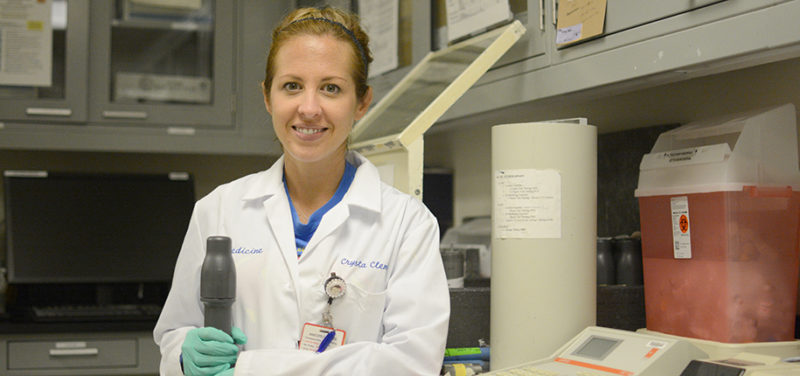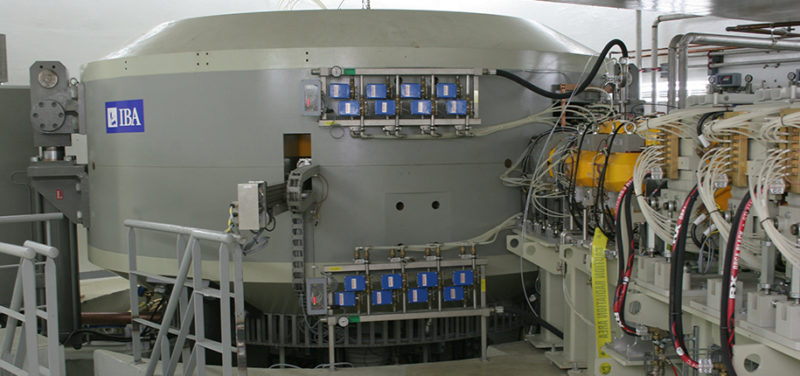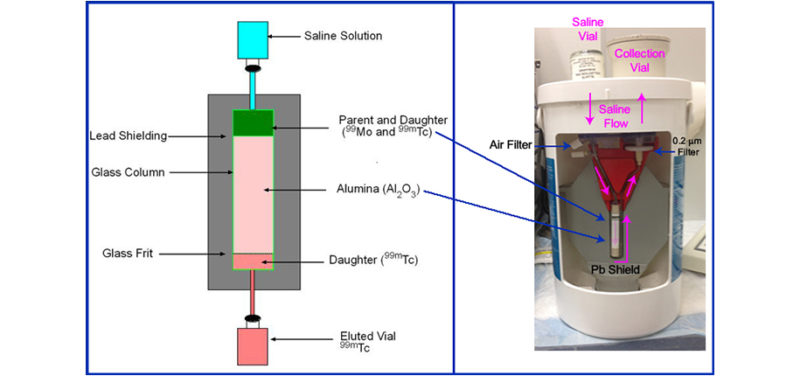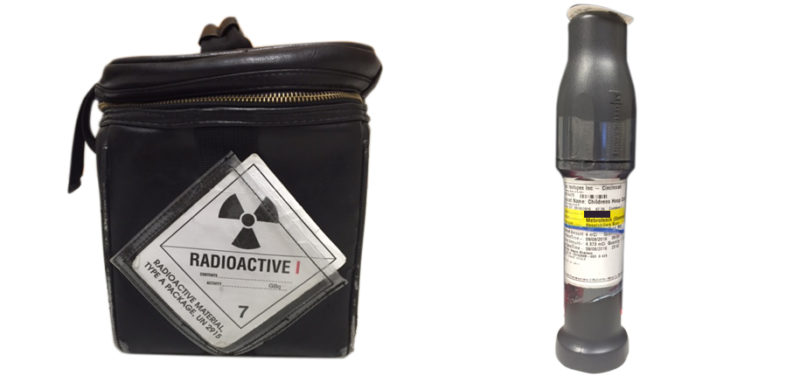
In Nuclear Medicine, all of our patients are imaged with a type of radioactive medicine. There are several types we use that can be administered through a urinary catheter, vein, or by mouth. The radiopharmaceuticals we use have different half-lives, meaning they all decay at different rates. For this reason, we have to order our doses to be delivered for the day of the test.
 Photo: Cyclotron, which produces radioactive material for Nuclear Medicine PET scans. Photo from www.buffalo.edu.
Photo: Cyclotron, which produces radioactive material for Nuclear Medicine PET scans. Photo from www.buffalo.edu.
 Image: Generator that produces radioactive material for our “everyday” scans. Image from www.people.vcu.edu.
Image: Generator that produces radioactive material for our “everyday” scans. Image from www.people.vcu.edu.
After reviewing our schedule, we call a pharmacy that specializes in making radioactive medicines and place an order for the following day. This radio-pharmacy is where they make the radioactivity and tag it to a specific compound for a specific test. The radioactivity is made from either a generator or cyclotron that is on site at the lab. Depending on what we are imaging, the pharmacist will tag it to different compounds to localize the area of interest such as bones, lungs, liver, brain, kidneys, etc. Once the doses are ready, a driver from the radio-pharmacy delivers the medicine on the same day of the patient’s test.
 Photo: Package (left) used to deliver lead-shielded containers (right) that contain radioactive doses.
Photo: Package (left) used to deliver lead-shielded containers (right) that contain radioactive doses.
All the radioactive packages are delivered to and stored in our “hot lab”. The walls and door surrounding the hot lab are lined with lead and kept locked. The hot lab has an area that is surrounded by lead in which we store and draw up our doses for the day. This lead protects the technologists from the amount of radiation they receive. When a patient arrives, the nuclear medicine technologist draws up the patient’s dose and adjusts it according to their age or weight. We have a special detector called a dose calibrator, which measures the amount of radioactive medicine we administer. Once the dose is drawn up, we place it in a lead shield until we administer it to the patient.
Related Article: Taste of Radiology
The radioactive medicine is eliminated from the body by decaying away, as well as normal body excretion. All of our unused doses and waste that may have contamination from the radioactivity, such as blood and urine, are stored in our radioactive waste room. A radiation safety officer from UC will come and check the waste with a special radiation detector until it measures a level of background radiation. Then this waste is disposed of with the regular trash.
The life of the radiopharmaceutical all depends on the half-life of the radioactive medicine we are using. With most of our scans, the radioactivity would be gone within one to two days, requiring no precautions as it moves through the body quickly. These are safe for the patient and anyone with whom they have contact.
Contributed by Crysta Clements, CNMT and edited by Bessie Ganim, Nuclear Medicine Technologist.
